Digital drawing on your phone/tablet | An in-depth look
There are many foundational questions for the aspiring artist who wants to improve their artistic skills in the area of drawing and painting.
Questions such as these are core to painting and drawing:
- How do you learn tones in drawings and paintings
- How to get better faster in drawing strokes
- How to learn portrait paintings and drawings easily
- How to improve overall skills rapidly
These are skills that artists learn as they try to improve their skills in mastering tools and improving their technical skills in drawing and painting. It is only through this experience that an artist can go onto pursue their journey of creativity in the arts.
I am happy to say, there is a fast path to rapidly acquire the fundamentals listed above. My interest in traditional and now digital drawing and painting has led me to develop a new approach to drawing that will enable the aspiring artist to get to their goals quicker and faster.
A note on photorealism drawing and painting
We can safely say that to create photo realistic drawings or paintings, the technical mastery of the tools are inherent to the artist. It is perhaps fitting to say that to achieve the goals of photo realism drawing, we have mastered the art of tone definition, drawing strokes, improving overall skills etc. as pointed out in the above list.
Here is a recent photo realistic drawing that I did with the Paintology app in the grayscale mode.



Here are some key points to understand the nature of photo realistic drawings shown above in the zebra example.
For a first time user, the drawing can be construed as a photograph but on closer inspection will show it to be a drawing made by a user.
I recently posted a short post on the Quora platform since there were much interest by artists in the area of photo realistic drawings.
https://www.quora.com/How-do-you-draw-a-zebra-realistically/answer/Ferdouse-Khaleque
I show a close up of the photo and the drawing so you can see the differences:

Clearly the aim of the drawing is not make it super realistic ie. hyper realistic but to pull of a drawing with the minimum of effort that makes it look photo realistic to the average user.
Here are big differences in the comparison of hyper realistic and photo realistic drawings. You could argue that the skills required in hyper realistic drawings are tedious and repetitive since they are replicating the tiny details to fit the overall picture. In the case of photo realism, I will go one step further to say that artists use more of their creative technical tools in photo realism. What they are doing is using their skills of the tools to create the illusion of photo realism.
Another factor that plays a part in the comparison, is that photorealist artists often make the drawing a great deal faster than hyper realist artists. The quicker that an artist creates the drawing is an indication of their master of the skills at hand.
Photo Realism – Traditional vs Digital
If you ever looked at a drawing of the famous Marcello Barenghi, below is a video…
You will see that Marcello uses a number of drawing tools to accomplish this painting. No doubt these tools will be of higher quality than normal. Try to find out how many tools are used in addition to the spray paint that he uses for this drawing.
Now compare a similar drawing done on the Paintology app below.
The above drawing was created on the Samsung S6 android tablet with a stylus using the Paintology app.
Clearly, we can see the versatility of the digital medium over the traditional, there are no special tools required as in the traditional!
Let’s examine the time it took to do each of these drawings.
Although Marcello does not indicate the total time in his youtube post, and the recording is speeded up, it is possible to figure out the approximate time using a good video editor. I used the HitFilm express to work out the time, by slowing down the video to get an idea of the actual time it took to do the drawing.
Update:
Unfortunately, I was not able to determine an accurate time since the many steps were skipped in the video. For example, when filling in the panes of the diamonds. I found that the filled regions were skipped with several strokes and based on this information it was not possible to determine the time it takes.
Based on his own account of a drawing where he does mention time…
https://www.instagram.com/p/Bb134FzFsUy/?taken-by=marcellobarenghi
We can make an approximate guess that it takes anywhere between 8-12 hours for each drawing.
This makes sense, since the drawing on the digital platform should be quicker due to the ability of the medium to select the brush size, zoom and undo. The drawing that I did of the emerald took around 2.5 hours to complete from start to finish.
This was my first foray into digital photo realistic drawings that I had never done before. Since then I could probably shave off another one third of the time to complete this drawing.
The drawing was done 2 years ago and it somewhat surprises me that there have not been much interest in this post. It could be that nobody associates photo realism with digital and may think of it as manipulated or something. The fact that you rarely see any of these types of drawings in the main stream means that many are just no familiar with this technique and easily overlook it.
In any case, the point is that demonstration clearly shows the enormous versatility of the digital medium. If you become sufficiently competent with the tools of the app, you can do a similar drawing and even surpass the traditional medium.
Another point about digital drawing is that many people have a notion that digital drawings should have a certain style over traditional. For example, most people associate the style of digital drawing to be ‘perfect’ and without human imperfections. Take a look at a digital drawing below.

You can check out more digital drawings from the site below.
There is no doubt that the ‘correction’ tools of the app and software makes digital drawings look to be computer generated rather than created by a human. Due to the tendency of artists to master these tools to fix ‘imperfections’, the digital artwork will always appear ‘digital’.
One can ask the question, ‘does it have to be that way’. After all, in the traditional medium we had some tools to aid in drawing or painting such as the projection tool. However, there were no real on the canvas tools to help with our drawings or paintings and nothing extraordinary beyond the humble ruler, compass etc. Still the artists managed to create fantastic works of art! Almost inevitably these works of art are hung around all the museums around the world.
To understand the nature of drawing in the traditional and digital mediums, you can read my post on this subject.
Based on the findings of the differences in digital and traditional, we can perhaps draw some conclusions.
Digital Drawing > more emphasis on the tools at hand
Traditional Drawing > more emphasis on building up artistic skills
What we can conclude is that in digital drawing, there are many tools to allow the artist to overcome their deficiencies in achieving some effects. For example artists in the traditional medium do not aim for perfectionism, but to build up sufficient skills to pull of the overall drawing or painting. One has only to go to the National Museums such as in London to see some of the old masters. Get very close to the painting and you will see a mish mash of brush strokes that doesn’t make sense in the overall picture.
In the digital world, we can get very microscopic and the strokes you lay down are extremely precise depending on the resolution of the screen. This precision will continue to the macroscopic scale and would thus have an image that is more computer manipulated rather than retouched by a human.
Fortunately, the Paintology app keeps the traditional method of drawing into the digital medium.
The app has been designed to improve the skills of the artist so that they can rely on their inert skills to make their art creations.
Below is an example of a painting done with the Paintology app and posted in Quora with the link below.

Many were confused whether this was created on a traditional canvas and it is easy to see how.
The painting was done on a 32 inch converted TV with the Paintology app and using a brush.
Check out the video below to learn more.
Read more in the section below, ‘ Paintology – a different approach to Digital Drawing & Painting’
Can we expect to see more changes in the future?
Aside from the differing styles as mentioned above, the digital medium is already creating in roads into the real world of marketing, namely through the NFTs.
Check out this article here..
https://www.theverge.com/22310188/nft-explainer-what-is-blockchain-crypto-art-faq
Basically, anyone can now own digital artworks through the block chain and remain authenticated owner. The NFTs (non fungible token) based on the Etherium blockchain allows transactions of the artwork to be also sold as ‘reprints’ but always pointing back to original ownership.
It seems that the days of authenticating digital artwork is now here.
In the meantime, I have also created a simple method of retaining original ownership of the digital artwork which I explain in my Quora post here.
https://www.quora.com/How-can-you-prove-that-digital-art-is-yours/answer/Ferdouse-Khaleque
In the above post, I describe the process of maintaining the original digital artwork. The trick is simply to provide a lesser resolution of the original, so you retain the original resolution of your digital artwork.
Paintology – a different approach to Digital Drawing & Painting
I already discussed that digital drawings always have a digital feel to it by the nature of the tools used by the artist. Whereas in traditional paintings & drawings, it is almost obvious that the artist created the artwork from traditional materials unless of course the piece is representative of photo realistic or hyper realistic drawings.
The Paintology app available from the Google play store for Android devices, tries to overcome these differences. It was designed with a minimum set of tools but powerful enough to allow for advanced artists to make photo realistic drawings.
The approach of the Paintology app is different to many other drawings apps that are out there. The aim of the app is to make artists better by developing their inherent skills in drawing and painting. There is less focus on mastering the myriad of tools found in some apps but more in developing your inherent skills in the digital medium.
As such for those who are transitioning from the traditional medium to the digital medium, they should feel at home with the Paintology app. In addition, the app offers many ‘ways’ to draw while building up the important skills in art that most artists are looking for.
You will find many categories of drawings on the app which some will be familiar to you.

There is a category of ‘Paint by Numbers’ which you can vaguely guess it’s purpose. It is based on the popular ‘paint by numbers’ box sets for making paintings. In fact it was this very paint by numbers that I purchased in the hobby shop that set me on a path to painting and drawing.
The Paintology app has a similar way to the Paint by number of the traditional world as shown from an example below.

Using paint by numbers is very easy, once the tutorial is opened, you can select the colors numbered and paint the regions of the picture as shown. You do this until all numbers have been painted. This method is similar to the real world of paint by numbers and should not be confused with the many other paint by numbers app in the Google play store. Those apps allow you to click the region on the image and it will be automatically filled. As you can imagine this technique can be relaxing to most but will not help you become a better artist.
Another method of drawing with the app, is the Pencil Drawing section that you will find on the app.

In this category, you use mainly one brush tool called the shade to make almost pencil like drawings.
You can switch between your drawing and follow the video presented for some of these tutorials and draw along with the artist. This enables you to get better in drawing at a much faster rate. Just look for the video icon to switch back and forth, see screenshot below.

As you can imagine, there is also a category on Photo Realistic drawings. You can see some of the videos here to see the whole process of making these drawings.
Practice makes you better!
There is a lot of truth in the saying that ‘practice makes you better’. Sometimes, I can get very wrapped around the work at hand and not seeing the short or longer term implications of what I am doing. This is very easy to do since the mind is generally fixated in the moment in time whenever undertaking any tasks.
It is always a good idea to sit back and ponder what we did and what we observed and learned from this. The answer may not be obvious and you have probably heard the saying ‘to sleep over it’. This is oddly an accurate statement which relies on your brain consciousness to come up with answers that you may not be familiar to you. It is the path where people will allow new knowledge to flow into their lives and continue to bring about skill sets that they did not previously possess.
It can be as simple as to say to yourselves ‘I will continue to improve and get better and better’.
Many beginners fail in the pursuit of artistic drawing and design, simply because they do not believe it in themselves. As such they maintain an obstacle which the brain cannot over step.
Greatness can only be achieved in the actions of improvement, practice and a belief that you can really do it.
In my case, I had doubts about photo realistic drawing and the direction of where I was going.
Some of the questions that I had which some could relate to…
- Is this what I want?
- I can’t see where I am going in the long run
- Can I be really good as I want to be?
- Am I doing anything different?
These feelings can create doubt and maybe detract you from the long term goals. Sometimes, you need to listen to your inner voice and drop the path that you are taking and try something different.
As a journey into this incredible medium of digital drawings and paintings, I wanted to provide some of my experience in that journey.
The Journey into the Digital World
I remember my first reaction to picking up a tablet and attempting to make my first digital drawing. Keep in mind that I am very familiar with the technological world since I have been in the field of IT for several decades. The only form of art and design was using the Adobe suite of tools such as Photoshop and Illustrator. Even using these tools, I never ventured into making freehand drawings and used it primarily for web graphics, logos etc.
I was good at drawing and painting when I was a kid and this part of my skillsets remained dormant for most part of my life. It was only when I decided on a whim to buy a Paint by Number painting set that it rekindled my interest in drawing and painting again. I was producing good works of art which was highly commended.
I kept my interest going, trying out large canvases, new materials such as charcoals, pastel pencils, acrylics etc. It was always a hobby on my part and no real attempt to make myself commercially viable.
I kept a sketchbook where I used to draw in charcoal pencils which I enjoyed a tremendously. Many would be able to relate to this feeling when one get’s immersed in a drawing.
Aa an explorer of some sorts, I always like to push the limits of my drawing and painting. About 3 years ago, I decided to give digital drawing on the tablet a try and downloaded Sketch which was the most popular app.
Most of the artwork for the Sketch app was focused in manga and cartoon style drawings which wasn’t really my cup of tea. However, I did enjoy the social aspect of the site where many users around the world would post their artworks to the Sketch site.
There were some artists who took their skills to higher levels and produced artwork outside of the usual manga and cartoons. I had an inkling of the users to be young and somewhat tech savvy but completely separate from the group of traditional artists.
In the same manner that some of the traditional artists had hesitancy in the digital medium, I also had some doubts.
However, to make judgement about the new medium without giving it a try would not do it justice. As explained in one of my Quora posts, it is important to go into something a new and open mind. Without this approach it is easy to pre-judge and a danger that we will give up easily without trying hard enough.
To show you how my first attempts at drawing with the Sony Sketch, check out this drawing that I did back then.

As you can see, I was already trying to utilize the foundational skills required to make this drawing. There is shading to achieve the tones and highlights with the line tool.
I found that my pursuit in art and background in technology rekindled my interest for the old Paintology app that I had made back in 2012. Due to other distractions in life, I abandoned this work despite the big interest from other users. Remarkably, I was able to use the ‘old’ app still today to make drawings on the tablet and a converted 32 inch screen.
I found the 32 inch medium as comfortable as painting with a brush, you can watch the video posted earlier on the 32 inch device. This allowed me to create paintings on the 32 inch screen while at the same time developing the new Paintology app.
Here are some drawings using the 32 inch drawing canvas.


Here is the video of the painting:
If you follow the video, you will see the ease at which the ‘paints’ or colors are laid down.
Since then, I have made many paintings with the 32 inch digital canvas which you can find on my YouTube channel below.
https://www.youtube.com/c/Ferdouse
It was a truly fulfilling experience to paint on the 32 inch digital canvas and I did ask myself why many artists not do the same. I think like so many of my previous endeavors, I often find that I bring something to the world earlier than usual. Case in point where back in my IT programming days, introduced an online dating site called Jumpdates.com in 2000 which still exists today.
Then in 2005, I had the bright idea to create a turnkey online food ordering system which was called Menustation.com. Unfortunately, this didn’t go too far since on completion in 2008, the economy took a dive and the restaurants were not keen to spend more money. Today we have giant online food ordering services such as GrubHub, Justeat, Deliveroo etc.
Probably in the same token, the digital technology and art I am introducing is perhaps a bit early in the market but who is tell. After all, the journey is sometimes the most important part of all of this rather than the feats of monetary achievements.
In those few years, I have also went back and worked on traditional mediums and have produced art pieces which gracefully sits on the walls my sisters house for everyone to admire.
Here is a piece that I did around that time.

It’s interesting to note on the creativity regarding the artworks that I do on various mediums.
For some reason, my creativity seems to be on overdrive when I am working with traditional materials such as acrylics. In such cases, I am not short of coming up with unique works of art like the one shown above. I would put this down to the tools in my possession such as brushes and knives along with the paints that automatically allows me to be creative.
I find that there is a correlation of the size of the painting and creativity. The bigger the canvas, the more creative one can become. I don’t claim this to be true for other artists, but this appears to correlate well with me.
Let’s fast forward to the present time and show you some digital artworks that I have done with the tablet and phones.
I find it very comfortable drawing on phones or tablets but to increase the mix of creativity, I prefer to do something different each time. I will show you an approach later in the article which I think will address the most common hurdles that aspiring artists face in order to accelerate their learning.
Portraits:
Portraits are one of the most challenging to do for many artists due to the higher color bandwidth of the tones. This challenge is further exacerbated by the very subtle tonal changes that are found on the face due to shadows, undulating features of the face such as nose, eyebrows, forehead, cheekbones etc.
In the ‘block coloring’ method that I explain later, you can find hundreds of tones on a particular face and to reproduce them on your artwork can seem very daunting. Some portrait artists reduce the work level by drawing faces in gray tones only.

I found that with some effort, you can use the line and shade brush to blur the hard edges of the gradients in the face. However, I did not have a particular method to draw the tiny details of the hair which looks rather stark. I hope to bring you a video on this, to show you how I achieved some blurring of the various tones around the face.
Here is an important point when you want to achieve a particular effect on your painting. Don’t give up too easily with the tools that you already have, it is one of the reasons why many users jump to a ‘digital’ effect tool to achieve this. It is precisely this approach that defeats the skill level of the artist and showcases their need for tools to produce the desired effects. It is one of the reasons why digital drawings or paintings done in this manner can appear ‘digital’.
Here is another drawing of Will Smith that I did earlier.

Block Coloring Method to improve Art Skills
I thought I would dive straight into the ‘Block Coloring’ method of drawing with the Paintology app. The method is very simple, we load an image in trace mode to our canvas in Paintology and then simply color over regions by using the color picker. The brush used is the line tool set at 100% density or opaqueness.
A video demonstration will provide a better explanation of the approach of the drawing above of Will Smith.
By using the color picker we can find exact color points on the face and draw a small region around that color. We repeat the process all around the face. Depending on the ‘blockiness’ or how big your colored regions are, you will have a detailed drawing or a visible ‘blocky’ drawing. The blocky effect can be put to good use to make an abstract or impressionistic drawing. Further work will be necessary to create abstract or impressionistic works of art using this approach.
Look out for a separate article on this new approach to doing digital drawing. It should be emphasized that any subjects can be drawn in this way and hope to bring you more examples.
Summary
Digital drawing has come a long way to keep aspiring artists happy in their quest for visionary works. The digital medium is looked upon as very different to traditional mediums and have yet to win many friends from the traditional camp.
An explanation of why traditional artists remain steadfast to their physical mediums such as pencil, pastels, acrylics is due to some preconceived ideas of digital drawing. The digital art revolution has been around for decades and the tools available from the software suppliers have been driven by graphics artists and also commercial needs.
The same thinking now evolves into the apps we have today which can provide a damper on some of the traditional artists wanting to migrate to the digital medium.
In the same fashion as the traditional medium, Paintology has designed an app with much of the philosophy of the traditional thinking. Your provide another medium and let the artists decide how to best use the tools to continue their creative journey.
As a result, many of the drawings or paintings created on Paintology have a ‘traditional’ look unlike the mainstream digital artwork found elsewhere.
The Block Method of drawing and painting with the Paintology app will allow artists to rapidly pick up fundamental skills in the art of drawing and painting.
This is how art should be.

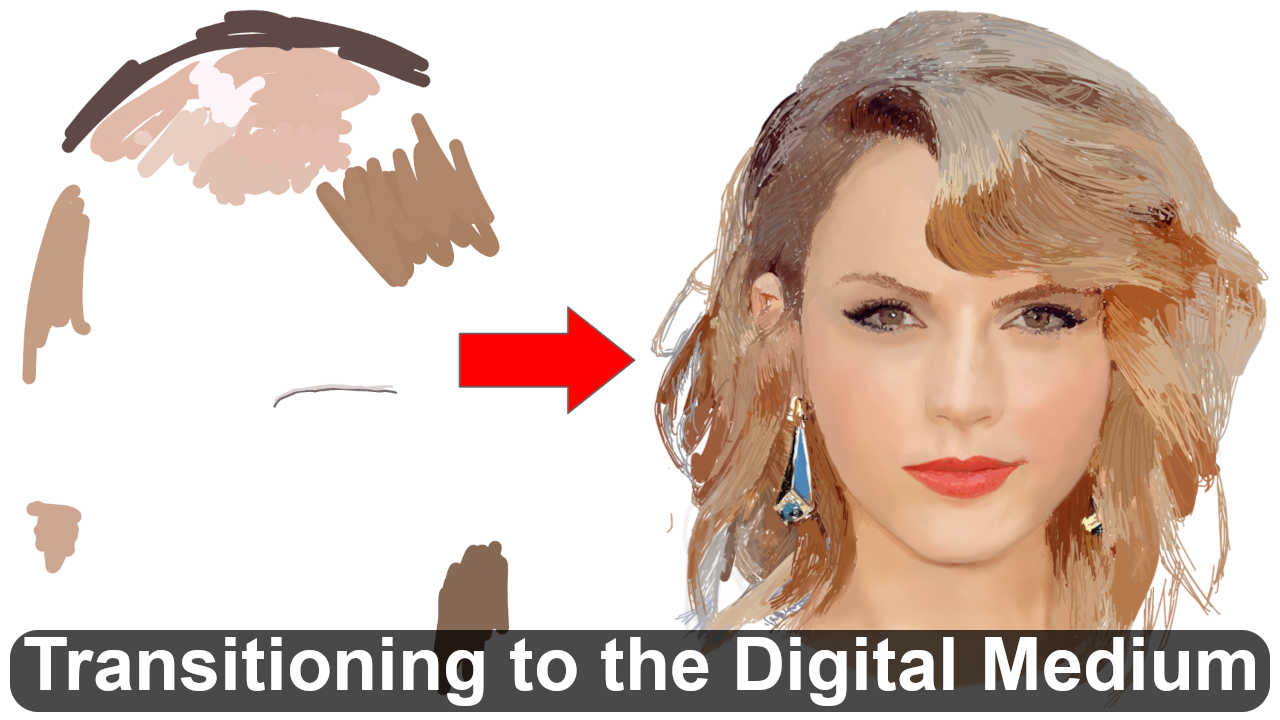

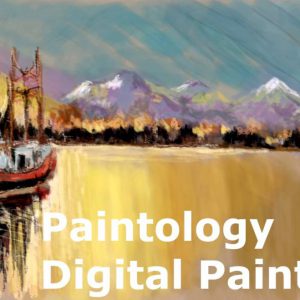
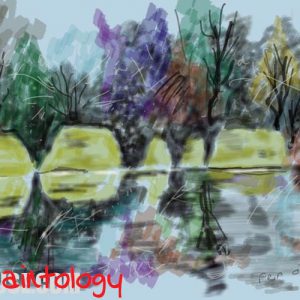
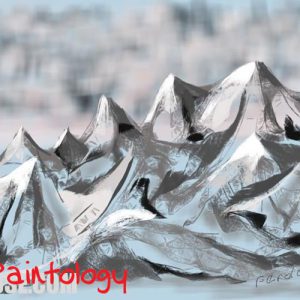
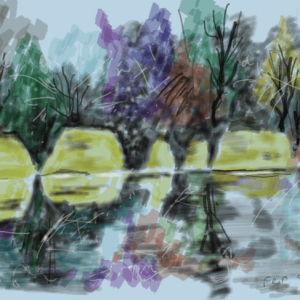
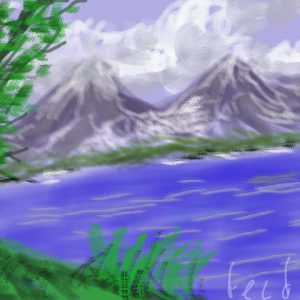
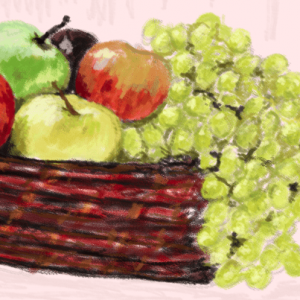
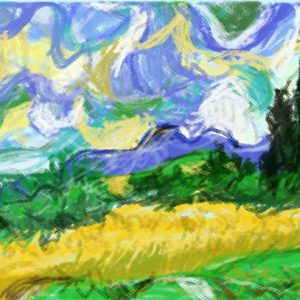
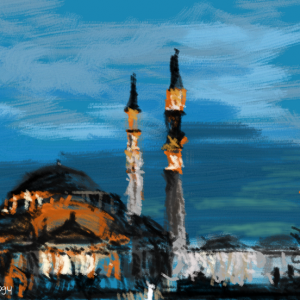
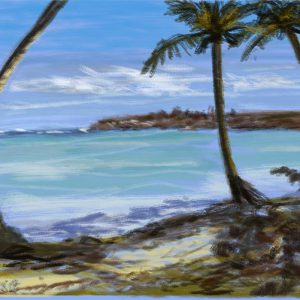
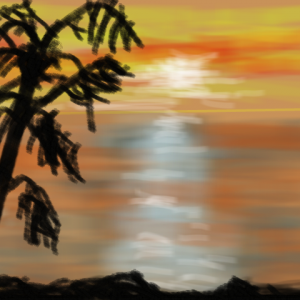

 Digital Canvas
Digital Canvas
Leave a Reply